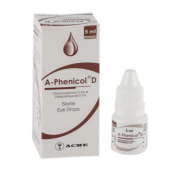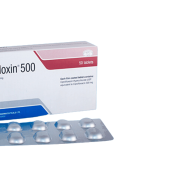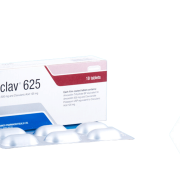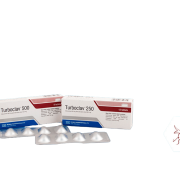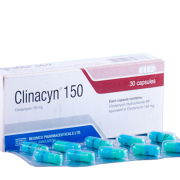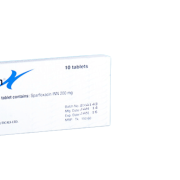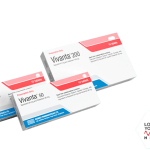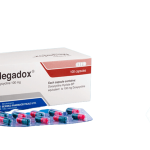Maxidim
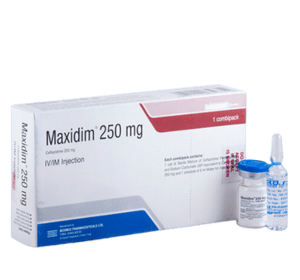
Generic Name: Ceftazidime
Dosage Form: IV/IM injection
TG Name: Anti-infectives
1. What Maxidim is and what it is used for?
Maxidim (Ceftazidime) is a cephalosporin antibiotic. It works by killing sensitive bacteria. It is useful for the treatment of a number of bacterial infections. It is a third-generation cephalosporin.
It is highly effective in Community Acquired Infections and Pseudomonas infections.
2. Before you take Maxidim
Some medical conditions may interact with Maxidim (Ceftazidime). Tell your doctor or pharmacist if you have any medical conditions, especially if any of the following apply to you:
- if you are pregnant, planning to become pregnant, or are breast-feeding
- if you are taking any prescription or nonprescription medicine, herbal preparation, or dietary supplement
- if you have allergies to medicines, foods, or other substances
- if you have had a severe allergic reaction (e.g. severe rash, hives, difficulty breathing, dizziness) to a penicillin (eg, amoxicillin) or beta-lactam antibiotic (e.g. imipenem)
- if you have stomach or bowel problems (e.g. inflammation), blood clotting problems, kidney or liver problems, myasthenia gravis, or poor nutrition
Some MEDICINES MAY INTERACT with Maxidim (Ceftazidime). Tell your health care provider if you are taking any other medicines, especially any of the following:
- Aminoglycosides (eg, gentamicin) or diuretics (e.g. furosemide) because risk of kidney side effects may be increased
- Chloramphenicol because it may decrease ceftazidime’s effectiveness
- Hormonal birth control (e.g. birth control pills) because its effectiveness may be decreased by ceftazidime
This may not be a complete list of all interactions that may occur. Ask your health care provider if ceftazidime may interact with other medicines that you take. Check with your health care provider before you start, stop, or change the dose of any medicine.
3. How to take Maxidim?
Use Maxidim (Ceftazidime) as directed by your doctor. Check the label on the medicine for exact dosing instructions.
- Maxidim (Ceftazidime) is usually administered as an injection at your doctor’s office, hospital, or clinic. If you are using ceftazidime at home, carefully follow the injection procedures taught to you by your health care provider.
- Do not use Maxidim (Ceftazidime) if it contains particles, is cloudy or discolored, or if the vial is cracked or damaged.
- To clear up your infection completely, take ceftazidime for the full course of treatment. Keep taking it even if you feel better in a few days.
- Keep this product, as well as syringes and needles, out of the reach of children and pets. Do not reuse needles, syringes, or other materials. Ask your health care provider how to dispose of these materials after use. Follow all local rules for disposal.
- If you miss a dose of ceftazidime, take it as soon as possible. If it is almost time for your next dose, skip the missed dose and go back to your regular dosing schedule. Do not take 2 doses at once.
Ask your health care provider any questions you may have about how to use Maxidim (Ceftazidime).
4. Possible side effects
All medicines may cause side effects, but many people have no, or minor, side effects. Check with your doctor if any of these most COMMON side effects persist or become bothersome:
Diarrhea; headache; nausea; numbness or tingling of skin; stomach pain; vomiting.
Seek medical attention right away if any of these SEVERE side effects occur:
5. How to store Maxidim?
- Your health care provider probably will give you a several-day supply of Maxidim (ceftazidime) at a time. If you are receiving ceftazidime intravenously (in your vein), you probably will be told to store it in the refrigerator or freezer.
- Take your next dose from the refrigerator 1 hour before using it; place it in a clean, dry area to allow it to warm to room temperature.
- If you are told to store additional ceftazidime in the freezer, always move a 24-hour supply to the refrigerator for the next day’s use.
- Do not refreeze medications.
Store your medication only as directed. Make sure you understand what you need to store your medication properly.
Keep your supplies in a clean, dry place when you are not using them, and keep all medications and supplies out of reach of children. Your health care provider will tell you how to throw away used needles, syringes, tubing, and containers to avoid accidental injury.


